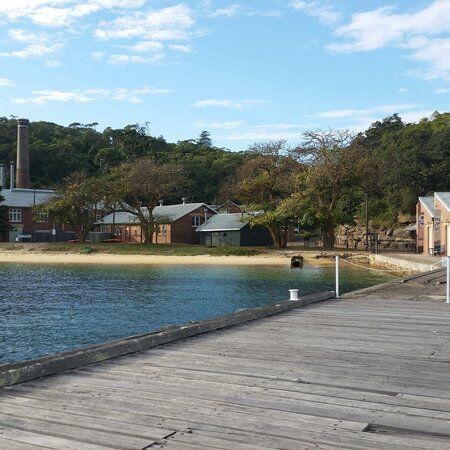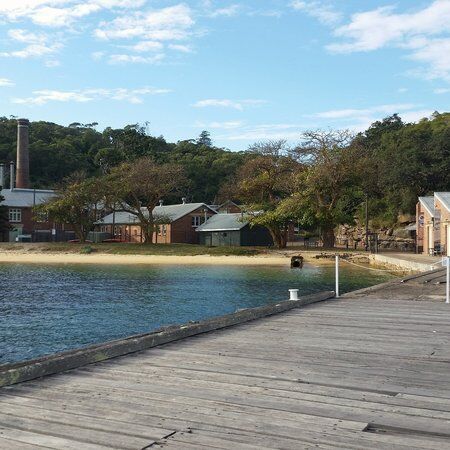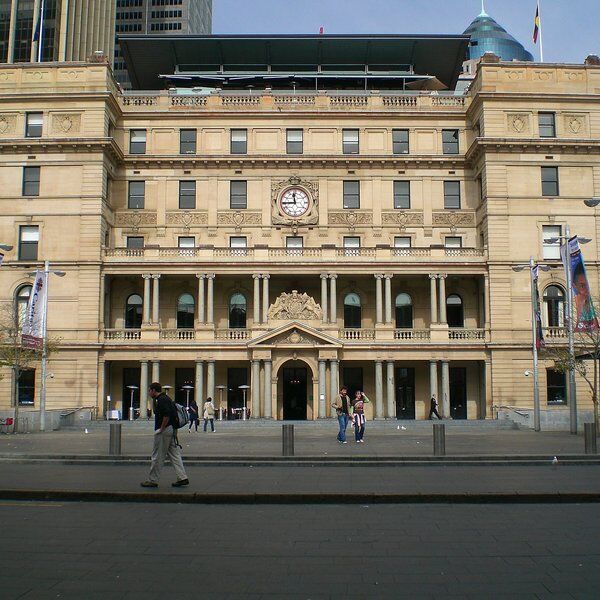Discover Q Station Manly in Sydney
Q Station Manly, situated within the 30-hectare North Head site in Sydney, is a historic quarantine station originally known as the North Head Quarantine Station. It was established in the 1830s to isolate immigrants and travelers arriving in Sydney, protecting the colony from infectious diseases. The site is now a boutique hotel offering a wide range of experiences including stunning wedding venues, modern conference facilities, and an acclaimed restaurant.

Aboriginal Heritage of North Head, Manly
Car-rang-gel, or North Head, is a site of cultural and spiritual importance to the Indigenous peoples of the Sydney area, particularly the Gayamagal peoples. For thousands of years these people gathered on this land for various ceremonies and rituals performed by the Koradgee—medicine men and women healers. Today, North Head is listed on both State and Commonwealth heritage registers and is protected by the New South Wales National Parks and Wildlife Service.
European Arrival and North Head Significance
The 1809 obelisk at North Head was a significant navigational landmark from the First Fleet's arrival. It served as a channel marker for vessels navigating the Sow and Pigs Reef. This obelisk, potentially one of the oldest European structures on Sydney Harbor, still stands today.
The History of Q Station Manly
The North Head Quarantine Station, established in the 1830s, was initially used to isolate immigrants and travelers arriving by ship to prevent the spread of infectious diseases such as smallpox, Spanish influenza, and bubonic plague. Ships arriving in Sydney Harbor, suspected of carrying illnesses, were directed to North Head, chosen for its isolation, fresh water supply, and proximity to the harbor. Passengers and crew were both quarantined here if necessary.
Before its establishment, convict ships were quarantined by the Governor's informal proclamations. However, with the rise in free immigrant vessels entering port in the early 1830s, a formal statutory regulation became necessary. This led to the Quarantine Act of 1832, which mandated that all ships entering port be screened for disease and quarantined if necessary. Over time it not only housed quarantined immigrants but also responded to local epidemics.

Evolution of Quarantine Practices
Mid-19th Century Evolution
In 1837 a review of conditions aboard immigrant ships led to improved checks and conditions for emigrants. The practice of housing the sick onboard was judged to be inefficient and unethical and so permanent accommodation was constructed at North Head. The sick were now housed ashore while their ships were cleaned and returned to service. Consequently, mortality rates dropped significantly, and fewer ships required quarantine.
The Beejapore's arrival in 1853, with over a thousand passengers and inadequate quarantine facilities, triggered further developments. Temporary measures included the use of the hospital ship Harmony and the construction of additional accommodation. Concerns about moral standards and living conditions led to the creation of barracks for single women, new buildings, and improved quarantine infrastructure.
Changes in the Late 19th and Early 20th Century
The decline of immigration during the 1860s resulted in limited use and upkeep of the Q Station Manly. Quarantines of the Hero in 1872 and the Baroda in 1873 highlighted the station's inadequacies, prompting the construction of new First Class accommodations.
From 1881 to 1894, the hospital ship Faraway served as a smallpox hospital anchored off the station. The high costs of detaining steamships led to the establishment of an Assistant Health Officer at Watson's Bay to reduce inspection delays.
After 1909 the Commonwealth became responsible for quarantine services. They coordinated nationwide quarantine efforts, intercepting ships at outlying ports to prevent disease from reaching Sydney. In 1921 the Department of Health was established and quarantine practices evolved further.
As a result of these improved practices, and due to technological advances and improved medical science, the number of quarantined ships reduced drastically, despite increased immigration post-World War II. Between 1946 and 1980, Sydney received nearly 700,000 assisted immigrants, yet only four ships were quarantined.
The Closure of Q Station Manly
After the station ceased operations on March 16, 1984, ownership was transferred to the State Government and it became part of the Sydney Harbor National Park. Despite efforts by the National Parks & Wildlife Service to maintain the site, many buildings fell into disrepair. In the 1990s, it became clear that private sector funding was necessary to ensure long-term conservation. Today, the site has been transformed into Q Station Manly, a 4.5-star hotel and conference center.

Third Quarantine Cemetery at Q Station Manly
Between 1832 and 1984, Q Manly Station quarantined nearly 16,000 people and at least 580 vessels. An estimated 572 individuals died and were buried at the station. Recent archaeological projects have revealed hidden graves at the Third Quarantine Cemetery, which was established in 1881. This cemetery became the final resting place for at least 241 people who died from diseases like influenza, bubonic plague, and smallpox. Included in this count is Annie Egan, a nurse who died from the Spanish Flu in 1918 while caring for soldiers.
Engravings at Q Station Manly
One of the most historic features of Q Station is the engravings carved into the sandstone by those who were quarantined there. Among these people were soldiers from World War I, orphans from Vietnam, and residents of Darwin displaced by Cyclone Tracy. The soft sandstone at the station became a diary for countless images, stories, and messages of survival and adaptation by these people, carved into the rock.
These engravings dating from the 1830s to the 1970s, are a key heritage feature of the site. A project led by Associate Professor Annie Clarke from the University of Sydney recorded and interpreted these engravings, linking them to records of people, ships, and epidemics. They have also been explored in the book "Stories from the Sandstone," by Dr. Peter Hobbins, Associate Professor Annie Clarke, and Dr. Ursula Frederick.
Conservation of the Q Manly Station’s Surroundings
The Quarantine Station is not only significant for its quarantine history but also for its natural heritage. The area around North Head is home to a variety of flora and fauna, including endangered species such as the eastern long-nosed bandicoot and the little penguin. The natural beauty of the site, with its rugged cliffs and diverse ecosystems, is preserved as part of the Sydney Harbor National Park. This environment continues to provide a sanctuary for wildlife and a quiet place of reflection for visitors.
Military History and North Fort at North Head
Established in 1936, North Fort at North Head was a crucial military complex during World War II. It featured two 9.2-inch guns serviced by a network of underground tunnels and a bomb-proof Plotting Room, pivotal to Sydney's coastal defenses. The Australian Women’s Army Service (AWAS) filled many wartime positions at North Fort, although their contributions remained classified for many years.

Exploring Q Station Manly Today
The Q Station Hotel
Q Station Hotel, within the Sydney Harbor National Park, offers luxurious accommodation with stunning views across Sydney Harbor. Guests can stay in the preserved buildings, with rooms divided into first, second, and third class to reflect the station's history. The accommodation is equipped with ceiling fans and heaters, but not air conditioning, to maintain the site's authenticity.
The hotel is open 365 days a year for visitors to enjoy. There are day trips, overnight stays, and educational programs to explore as well. The site also features well-preserved artifacts and historical exhibits, preserved by Herb Lavaring, during the 1960s and 70s.
Dining at Q Station
The on-site restaurants and bars provide diverse dining options, from light snacks to gourmet meals. Options include:
- Boilerhouse Restaurant: Located at the harbor-side base, this restaurant serves modern Australian cuisine with locally sourced ingredients. The seasonal menu reflects the diversity of those who spent time at the station.
- Views Restaurant: Provides a buffet-style breakfast with stunning views of Sydney Harbor.
- The Pantry: A casual dining option on the wharf, serving light meals and barista-made coffee.
- Engine Room Bar: Open on weekends, serving burgers and pizzas.
Tours and Activities
The "after dark tours" are particularly popular, delving into the ghost stories and myths surrounding the site's eerie past. Other tours include:
- Disease and Burial Tour: This after-dark tour delves into the station's past during epidemic outbreaks, focusing on the stories of those who suffered and died there.
- Quarantine Wander History Tour: Explore the Wharf Precinct and learn about the arrival and daily operations of migrants in the 19th and 20th centuries.
- Skip Through Quarantine Tour: Designed for children, this tour recreates the quarantine experience from 1921.
- Group History Tours: Ideal for special interest groups, these tours cover the site's significant heritage.
Getting to Q Station Manly
Q Station, located on Sydney’s Northern Beaches, is a 5-minute drive from Manly and about 30 minutes from Sydney's CBD. There are several ways to reach the station:
- By Car: Free parking is available at the site entrance, with a shuttle bus service transporting guests to their rooms.
- By Bus: The 161 bus runs between Manly and North Head.
- By Water: Arrive via Quarantine Wharf. For access assistance, contact the station.
- By Airport Transfer: Direct transfers from Sydney Airport can be booked through the station’s transfer partner.
- Complimentary Shuttle: A free shuttle service operates between Q Station and Manly, making it convenient for guests to explore the area.

Explore Nearby Q Station Manly with CityDays
Q Station Manly is set within a beautiful national park, offering numerous outdoor activities. Visitors can walk or hike the trails to Shelly Beach or hire snorkels, kayaks, or stand-up paddleboards and explore the surrounding waters, or simply relax on Quarantine Beach.
Or if you want to discover other heritage sites around the CBD—with rest stops at cafes and bars along the way—why not embark on a CityDays Scavenger Hunt in Sydney, and in particular our Secrets of the CBD Hunt?
Scavenger Hunt tours are a great way to bring family and friends—or even dates—together for an afternoon of great fun and adventure, solving clues and snapping photos. Clues will lead you to the big sights and those that you'd walk straight past.
Our Secrets of the CBD Hunt is the perfect way to experience the city, and culminates at the historic Rocks. For more information about our Sydney Scavenger Hunts then click here: Sydney Scavenger & Treasure Hunts | CityDays.













